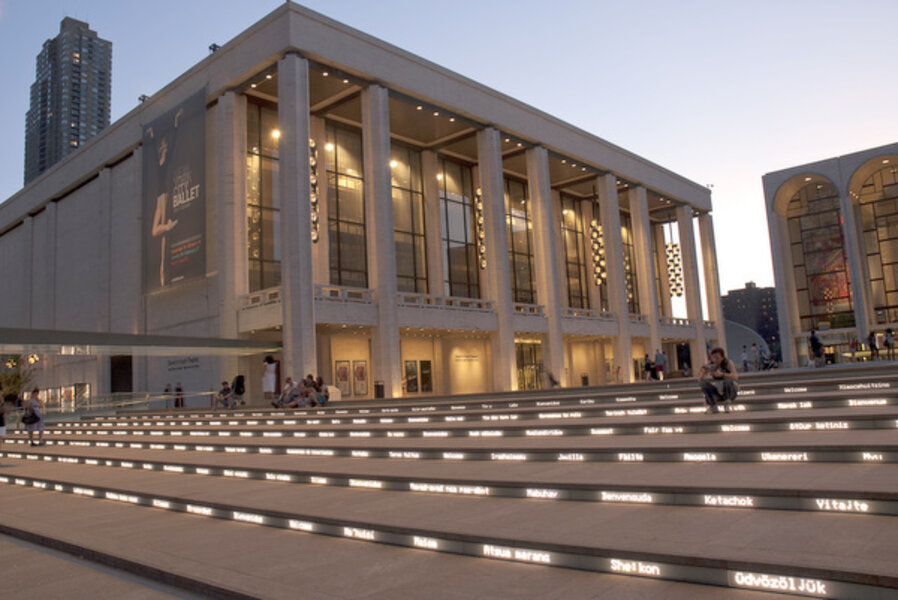New York City Opera: Providing an opera experience for all
Loading...
It’s like the Yankees for baseball or the Louvre for art: when one thinks of opera in America, the Metropolitan Opera, I bet you, is on the top of the list of thought-of companies. We see commercials on TV for the latest broadcast of the Met’s most recent show in your city. The Met has its own opera house in the center of Lincoln Center for all to see (The Metropolitan Opera House). But what some people might not know is that the New York City Opera, thought of as the “people’s opera” opposed to the Met, is just a short walk away from the opera house, also in Lincoln Center, but in the David H. Koch Theater. The City Opera’s goals as a company are to make opera affordable and accessible for the common public and to keep their repertory innovative and forward-looking. The classic New York opera and the people’s opera right next to each other—seems nice, right? But, as of this month, the City Opera has proposed a move out of Lincoln Center and into smaller venues around the city. To some, this seems like an ominous action.
The City Opera has taken residence in Lincoln Center since 1966, but recent budget concerns have pushed the officials to bail out. While poor acoustics in the theater have been a catalyst for talks of relocation in the past (and the theater was newly renovated), the recent decision is more of a result of financial troubles; the company pays around four and a half million dollars a year to rent out the theater. Along with the move, the company will cut its budget and end the contracts of some staff and musicians. In an article by Daniel J. Wakin of the New York Times, Julius Rudel, City Opera’s first conductor, said, “It would in essence be the end of the New York City Opera as we know it and love it.” Not only will the change remove the company from the theater that has been its home for more than 50 years, but it will complicate matters for performances—the company’s five-performance season is coming up in five months, and scrambling to find new venues with workable schedules and accommodations will surely be difficult and maybe even impossible.
The venues in question themselves are numerous and certainly different. The Brooklyn Academy of Music, orBAM, the “preeminent progressive performing and cinema arts center of the twenty-first century,” is an option that could be considered, as are the City Center, the Drill Hall in Park Avenue Armory, or possibly the Skirball Center for the Performing Arts of NYU.
And, as of May 26th, the City Opera Union filed a labor complaint due to the move. The American Guild of Musical Artists claimed that the move would leave artists in the dark and also accused the company with not telling its members the amount of weeks the next season would be.
So, why is this happening, especially in New York? This past season of the Opera included Séance on a Wet Afternoon, the opera by the Wicked composer Steven Schwartz which received bad reviews for its City Opera performance, A Quiet Place, the acclaimed last stage work by Bernstein, Intermezzo, the collection of vignettes by Strauss, The Elixir of Love, and still includes a concert version of Scott Joplin’s Treemonisha set to be performed at the Schomburg Center for Research in Black Culture. In a recent WQXR podcast, City Opera was said to seem like it did not have a definite vision for the season—it wasn't balanced with standard repertory and contemporary repertory, but also wasn’t strictly contemporary. The topic of contemporary performances also came up in the podcast and how the relationship of the Met and City Opera factors in with modern works (Nico Muhly’s new opera, Two Boys, is being performed at the Met in two seasons). All the featured speakers on the podcast (Anne Midgette, the critic for theWashington Post, Amy Burton, a soprano who has sung with the City Opera, and Willem Brans, the vice-president of the Arts Consulting group) felt that all opera companies should try to include modern repertory.
But, perhaps this move isn’t such a bad thing. With a clean slate, the City Opera can reinstate and define their reputation as the “people’s opera.” With separate, independent venues, these operas can be much more accessible and probably more affordable. Plus, is it such a bad thing to break up the concentration of arts at Lincoln Center? To spread the arts around New York City could be nurturing and possibly create new companies and organizations.
Whatever ends up happening, all I hope is that the City Opera can thrive. While the Metropolitan Opera is the iconic American opera company, we need somebody to look out for the more casual opera-goers. We need the roe alongside the caviar, the buffalo burger as well as the all-beef. Hopefully the company can get on its feet again, because there is no such thing as too much opera. For me, at least.
Elena blogs at Neo Antennae.
------------------------------------------------------------
The Christian Science Monitor has assembled a diverse group of music, film, and television bloggers. Our guest bloggers are not employed or directed by The Monitor and the views expressed are the bloggers' own and they are responsible for the content of their blogs. To contact us about a blogger, click here.





